
(22 - 29 Dec. 2014)
Ice drift
The ice camp moved about 26 nautical miles (48 km) during the week (Fig. 1) - a distance roughly equivalent to the distance between Oslo and Gardermoen Airport. The ice drift was generally slow with a maximum of 0.3 knots on Thursday. The direction was due east across the Lomonosov Ridge. The wind speeds have been less than 10 knots all week except on Monday (18 knots). The wind direction from the north during Monday and Tuesday changing to the south during the last half of the week. The driving force was an elongated high pressure ridge extending from the Canadian Arctic to the East Siberian Sea at the start of the week. Wednesday through Friday the region of high air pressure at sea level was along the coast of the Canadian Arctic islands and at the end of the week more centered in the Beaufort Sea
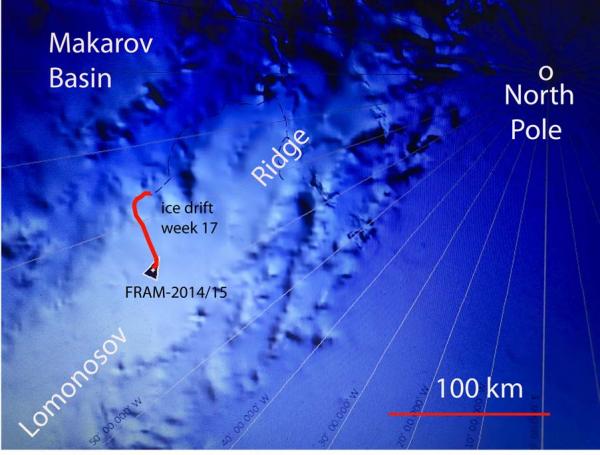
Fig. 1. Drift track (red) of FRAM-2014/15 during week 17 (22-29 December, 2014).
Sea ice dynamics
No known ice movements affected our neighborhood during the last full week of 2014.
Camp life
Temperatures were below -31° C on Monday. It got gradually colder towards the end of the week and below - 40° C from Saturday night onwards. The major event was the air drop on Tuesday at noon to the light of millions of stars in the sky and a 700 m long line on the ice surface marked by LED lights for every hundred meter. The weather conditions were perfect for the season. Captain Marhaug and his crew on the P-3 Orion of the 333 Sq dropped 16 well packed pieces of cargo, 2 boxes of Christmas snacks from NERSC and a small special request from Norwegian TV2. The result is illustrated in figures 2 and 3. The light sticks attached to the cargo were of little help, but reflex tape greatly helped us to spot the items in the drop zone. We located all items the first afternoon except one tent. The two high priority tents were dropped first and unfortunately landed in an ice rubble field 200 and 400 meter before the start of the drop zone (Fig. 4). The reason was probably a combination of their heavy weight (50 kilo) and relatively rapid decent and the need to fine tune the drop timing. The plane cruises at almost 400 km/hour at about 150 meter above the ice as the cargo is dropped. The heaviest items of well packed cargo had only a few small impact related issues to be dealt with. The top of the multi-fuel oven was slightly deformed, but Audun could fix that. However, the boxes of Christmas snacks suffered; all the much wanted supply of fruits was mushed but they still tasted great, and "pepperkakene" turned into fine brown sand.
We sincerely thank the Norwegian Air Force, the 333 Squadron and the flight crew for an excellent job. An e-mail of 26 December to this effect was sent to "Forsvarets Operative Hovedkvarter", the Maritime Air Support Center at Andøya, and the parties directly involved in execution of the flight. A special thanks also to Ola Johannessen and Jørn Thiede for assistance.
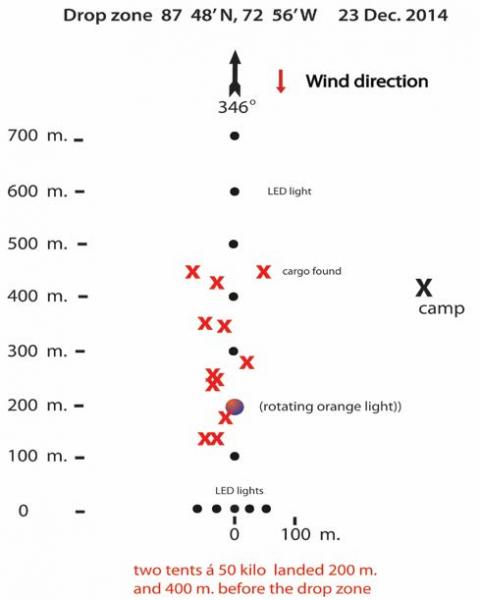
Fig. 2. The drop zone
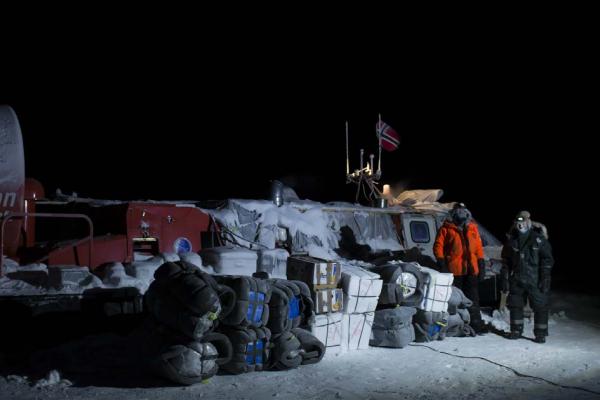
Fig. 3. Christmas presents brought by the 333 Squadron P-3 Orion.
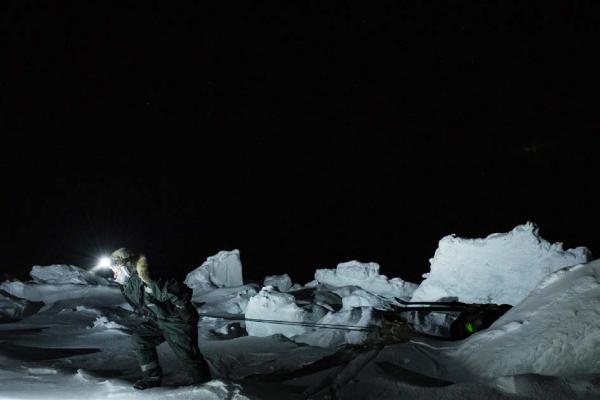
Fig. 4. Bringing home the last tent.
Tuesday December 23rd also included another small event - Yngve's 73rd birthday. Age may be expressed in several ways beyond the physical fact stated in your birth certificate. Most important is the basic premise of being blessed with good health. Your perception of age also has a mental aspect to do with your mind set and level of curiosity, and a physical aspect to do with your capability to tackle physical challenges. Both aspects override the number derived from the birth certificate - end of age discussion as the age issue is of marginal relevance to our endeavor. Fresh cod is the traditional birthday dinner. We learned that a TV2 reporter would be on the flight for the air drop, and submitted a special request for fresh cod in addition to Audun's plea for pork roast. Both were delivered and the scene of unpacking the cod was recorded and sent back to TV2. The work of locating and moving the cargo to our camp had priority, so the cod dinner did not take place until midnight following a preceding, short discussion on whether we should skip the dinner completely. We were rather exhausted from a long day in temperatures below -35° C.
The 24th of December was spent searching for the missing tent which was located in the early afternoon. By a stroke of luck, both tents hit the sea ice on small flat surfaces within an extensive field of ice rubble. To get them out took some effort (Fig. 4). The Christmas evening meal was therefore a late, basic cold buffet feast on the content from the NERSC boxes (Fig. 5).

Fig. 5. The Christmas evening meal.
The Christmas days were spent unpacking the cargo. Audun first repaired the damage to the multi-fuel oven and on the second day we cleared space for the tent to be connected to the existing work space. The PVC tent was difficult to unroll in the cold -36° C ), but the air-filled arches inflated rapidly. However, after a few minutes, the structure folded and fell to the ice surface. The problem could either be related to damage from the air drop or caused by the low temperature. We located a leak in the hose connection between the arch and the top beam, and suspected the O-ring seals. The problem was circumvented by construction of supporting frames of 2"x4" lumber which hold the tent up nicely (Fig. 6). We then moved the 14 kW multi-fuel oven in and fired up (Fig. 7). At half power, it brings the inside temperature down to a pleasant working temperature of -15° C while the outside is -40° C.
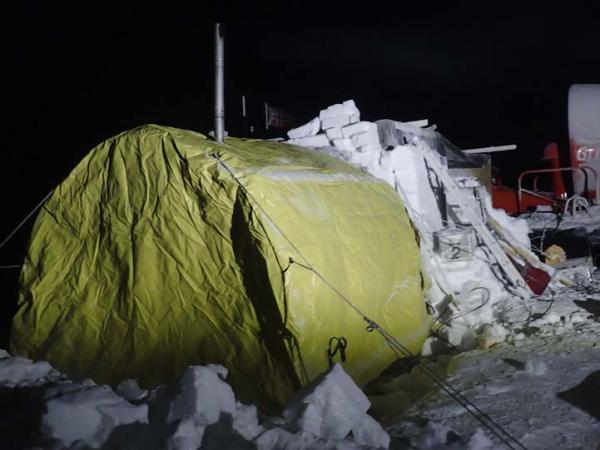
Fig. 6. The new tent added to the existing work space

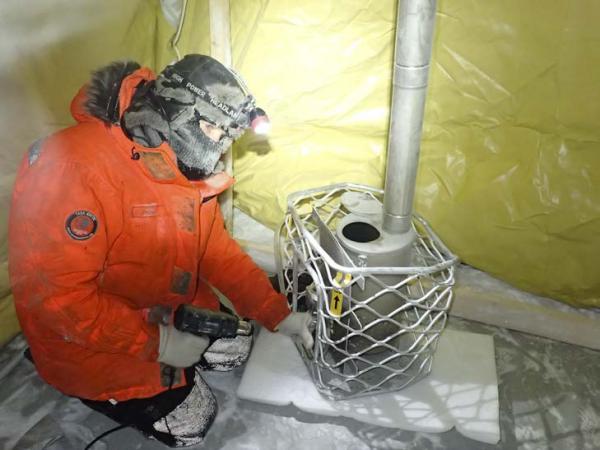
Fig. 7 Audun firing up the multi-fuel oven assisted by the ever present heat gun.
Science
This week, the following suite of continuous measurements has been operating:
Bathymetry and sub-bottom profiling:
- four active autonomous echo sounder buoys reporting to shore via Iridium
- continuous seismic reflection measurements ( 2 km sub-bottom penetration)
Oceanography:
- two Aanderaa current meters at 800 and 1050 meter depth, respectively.
Atmosphere:
- measurement of incoming and outgoing radiation from the ice surface
- surface infrared skin temperature
- sun time
- Aanderaa weather station
The seismic data acquisition has been going well all week, but on Saturday night the air gun stopped trigging. The solenoid was serviced, but the gun was leaking and had to be retrieved once more. As our inventory of firing seals is exhausted, we flipped the O-ring before putting the gun back into the icy water of -1.7° C. The trick worked for now.
The unconformity/correlative conformity at the base of the Cenozoic section does not appear to out-crop on the Makarov Basin side of the ridge along our drift track (Fig. 8). A possible explanation is that the slope is less steep and the ridge is wider than elsewhere. The absence of faults in the sediment section on the upper slope in this area is also conspicuous.
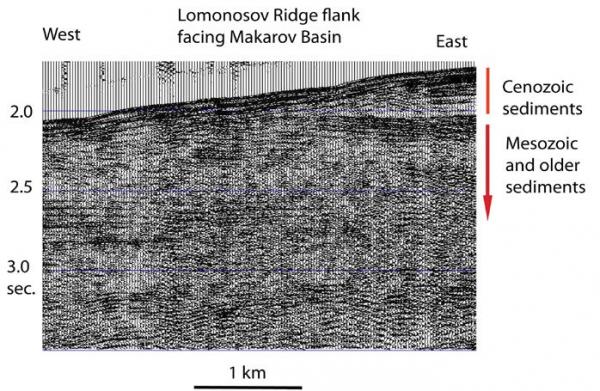
Fig. 8 Screen shot of the raw seismic data recorded across the slope of Lomonosov Ridge.
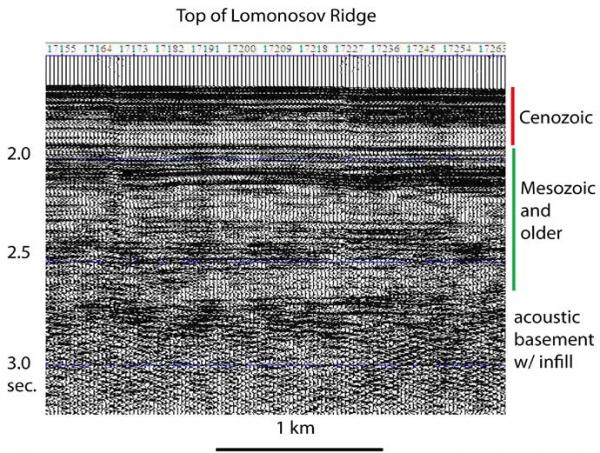
Fig. 9. Screen shot of the raw seismic data from the top of Lomonosov Ridge.
On top of the ridge is a 0.3 sec. (two-way travel time) thick acoustic unit considered to be Cenozoic overlying 0.8 sec. of older strata over infilled undulating acoustic basement (Fig. 9).
On Sunday, Audun changed battery on the data logger for the radiation flux measurement and also put in the new wind cross on the weather station.
Our friend, the polar fox has not been seen this week.
We welcomed the new moon as it moved above the horizon on 28 December.
Life is treating us well in the High Arctic.
Yngve Kristoffersen & Audun Tholfsen
Daily reports
Monday 22 December.
Position: 87° 48.7' N, 72° 54' W, temperature - 31° C, air pressure 1020 hPa, wind 14 knots from N. Ice drift 0.1 knots towards south. Shooting seismic reflection all day. Sent situation report to Maritime Air Support Centre, Andøya (MASC) and Forsvarets Operative Hovedkvarter (FOH) at 0240 GMT for expected supply mission. Air drop delayed by 24 hours - information received at 0530 GMT.
Tuesday 23 December..
Position: 87° 47.1' N, 72° 30' W, temperature - 34° C, air pressure 1033 hPa, wind 5 knots from the NNW. Ice drift 0.1 knots southeast. Acquiring seismic reflection data all day. Submitted situation report to MASC and FOH at 0354 GMT. First contact with the Orion plane of the 333 Sq. of the Norwegian Air Force at 0954 GMT about 45 minutes out. The plane arrived at 1040 GMT and made 8 passes dropping 16 pieces of cargo, all arriving within the proposed drop zone except two. We had located 15 pieces before midnight.
Wednesday 24 December. Christmas Eve
Position: 87° 46.8' N, 71° 22' W, temperature - 34° C, air pressure 1032 hPa, wind 4 knots from the W. Ice drift 0.2 knots towards the east. Acquiring seismic reflection data all day. Located the last item, a tent in an ice rubble field about 400 meter before the start of the drop zone. Moved the remainder of the items from the drop zone to camp. The Christmas eve dinner was a cold buffet as we were too tired to arrange anything traditional.
Thursday 25 December Christmas day
Position: 87° 47.3' N, 69° 16' W, temperature - 34° C, air pressure 1026 hPa, wind 7 knots from the south. Ice drift 0.3 knots towards the east. Shooting seismic reflection all day. Unpacked some of the received cargo. The multi-fuel oven had the top deformed, but seems repairable. Keeping the hydro hole from freezing is a problem as venting of the air gun creates a turnover every few minutes and introduce new cold water. A 2 kW heat stick in the water or a fan heater on top makes no visible impact. The ice chisel is the only way out.
Friday 26 December.
Position: 87° 47.5' N, 66° 41' W, temperature - 35° C, air pressure 1025 hPa, wind 8 knots from south. Ice drift 0.2 due east. Shooting seismic reflection all day. Audun repaired the multi-fuel oven. Burned garbage from the packing material of the cargo. We burn all trash regularly and collect metal cans and glass in a bag for back-haul to shore in due time.
Saturday 27 December
Position: 87° 47.4' N, 64° 42' W, temperature - 36° C, air pressure 1023 hPa, wind10 knots from the southeast. Ice drift 0.1 due east. Shooting seismic reflection all day. Cleared a place for the tent which for now will be an addition to our present work space. This was a cold day and we had to take the tent floor inside the cabin to heat it before it was laid out. The tent was difficult to unpack,
but doable. We connected to our air supply and the air filled support arches inflated nicely, but the structure folded after a few minutes from loss of air pressure. After several tries, we located a leak where the hose joint the end cap of the center roof beam. It appears to be a problem related to the cold and O-rings not sealing well enough. Also, the air gun stopped firing. It was recovered and the solenoid taken apart and cleaned. Back in the water, the gun was leaking air. We took it inside for the night as the ice drift was very slow. Now, the moon is again visible over the horizon.
Sunday 28 December.
Position: 87° 46.4' N, 63° 58' W, temperature below - 40° C, air pressure 1024 hPa, wind 3 knots from the NNW. Ice drift 0.1 knots towards the south. Disassembled the air gun, but our inventory of firing seals are exhausted so the O-ring was flipped over and re-used. Back in the water, the gun was still leaking air, but giving good data and shooting continued. Audun replaced the battery for the data logger of the radiation flux measurements, and also the broken wind cross of the weather station. We constructed an inside support frame out of 2"x2" and 2"x4" lumber for the tent and now it stood up nicely. The multi-fuel oven was put in and fired up for a test. The result was good and the next task is to connect the tent to the existing work space with the hydro hole. When that is accomplished, we should be in business.

